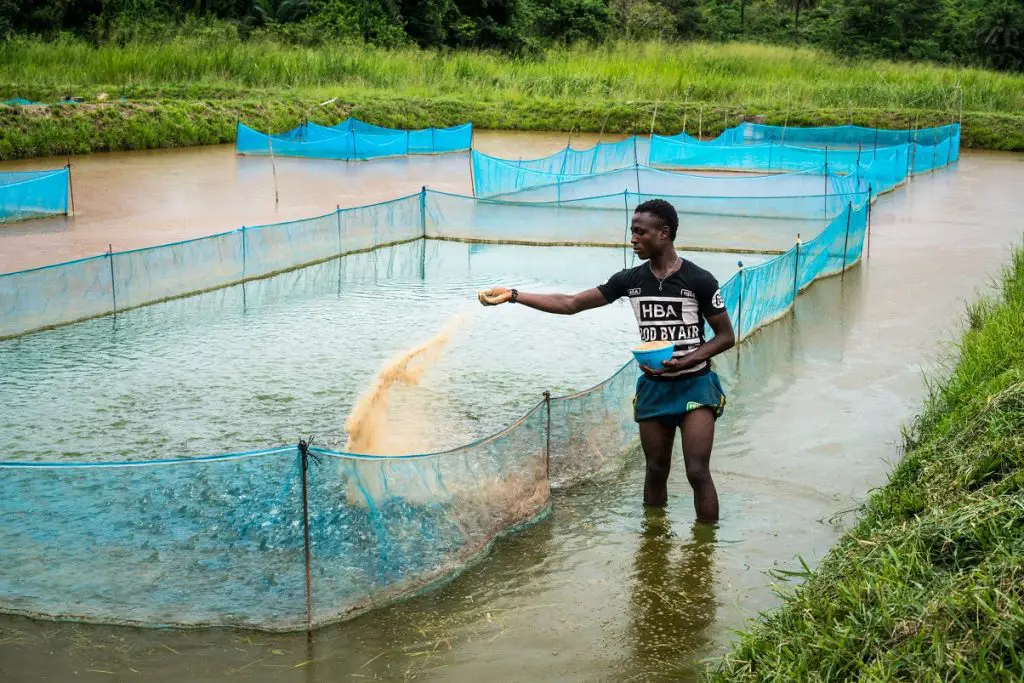Africa’s small-scale fisheries are a potential multi-billion dollar employer, in addition, to playing a critical role in global food security and must be supported by greater research and investment.
African and international experts say that the time to act is now since fish accounts for more than one-fifth of the protein intake of Africa’s region south of the Sahara.
It also provides a livelihood to millions of people in the continent.
As part of the Africa Blue Economy Forum (ABEF) 2019 and Murdoch University’s Third Commission, industry, NGO, government and academic representatives agreed that the collective value of the small scale fisheries of Africa was too big to ignore.
Africa’s fisheries and aquaculture value
In a 2014 report by the UN-FAO, value-added by the fisheries and aquaculture sector as a whole in 2011 was estimated at more than USD 24.0 billion. This was 1.26 per cent of the GDP of all African countries.
Among the various fisheries, the highest value is produced by the marine artisanal fisheries (0.43 per cent), followed by marine industrial fisheries (0.36 per cent), inland fisheries (0.33 per cent), and aquaculture (0.15 per cent).
This study estimated that in the continent the fisheries and aquaculture sector employs about 12.3 million people. Half of the 12.3 million people employed in the whole fisheries sector are fishers, 4.9 million (42.4 per cent) are processors and 0.9 million (7.5 per cent) work in fish farming. More than half of the fishers (55 per cent) are employed in inland fisheries whereas the largest share of processors (42 per cent) works in marine artisanal fisheries followed by 30 per cent in inland fisheries and 28 per cent in industrial fisheries.
In West Africa, fishing activities mostly in the marine artisanal subsector, are a major contributor to GDP with high overall contributions in Ghana, Mauritania and Sierra Leone.
Inland fisheries are the major contributor to GDP in Central Africa, with high overall contributions by the Democratic Republic of the Congo and Uganda.
In Southern Africa, marine industrial fisheries are the major contributor to GDP.
The report titled, The Value of African Fisheries, covered 23 countries which represent more than 40 per cent of all African States.
It was carried out in the framework of the New Partnership for Africa’s Development (NEPAD)-FAO Fisheries Programme (NFFP).
According to the estimates produced by the study, the fisheries sector as a whole employs 12.3 million people as full-time fishers or full-time and part-time processors. This represents 2.1 per cent of Africa’s population between 15 and 64 years old.
Fishers represent half of all people engaged in the sector, 42.4 per cent are processors and 7.5 per cent work in aquaculture.
About 27.3 per cent of the people engaged in fisheries and aquaculture are women, with marked differences in their share among fishers (3.6 per cent), processors (58 per cent), and aquaculture workers (4 per cent).
Investing in fish farming in Kenya
At Murdoch University’s second Blue Economy Symposium in Tunis last week, discussions strongly emphasised the need to highlight clear and innovative actions to effect a lasting transformation of the blue economy in Africa.
Participants in the symposium called on all nations and international institutions to recognise the value and economic impact of small-scale fisheries in Africa.
Their recommendations included increasing investment to allow fishing communities to be more involved in the co-management of fisheries. Directly engaging with fishing communities to collect and share relevant data regarding the state and economic value of small-scale coastal fisheries was another recommendation.
In Kenya, Liquid Telecom is partnering with the Kisumu innovation technology hub LakeHub and Pinovate to increase fish production.
Using the Internet of Things (IoT), the partnership helps monitor water temperature and pH values in ponds.
Liquid has already connected ten pilot-phase sensors that will be sending information and feeding instructions to farmers through the Android and iOS app.
Kenya is ranked the fourth major producer of aquaculture in Africa, according to the Kenya Aquaculture Brief of 2017.
The brief adds that Kenya, however, has a far greater capacity for fish farming, with over 1.14 million hectares potentially available to enable a production capacity of over 11 million tonnes per year.
In a move that will complement these efforts, Liquid Telecom plans to equip 5,000 western Kenyan farmers with the sensors and app by the end of 2019.
There are some 20,000 fish farmers in western Kenya with an average of 2 fish ponds each and around 2,400 fish per pond.
Commercial fish farming is meant to produce fish to supply markets at competitive prices and still make a profit.
The market is, therefore, the driving force for commercial fish farming in Kenya.
Key parameters that determine the levels of production and success in fish farming are water quality, feed quality and seed quality.
